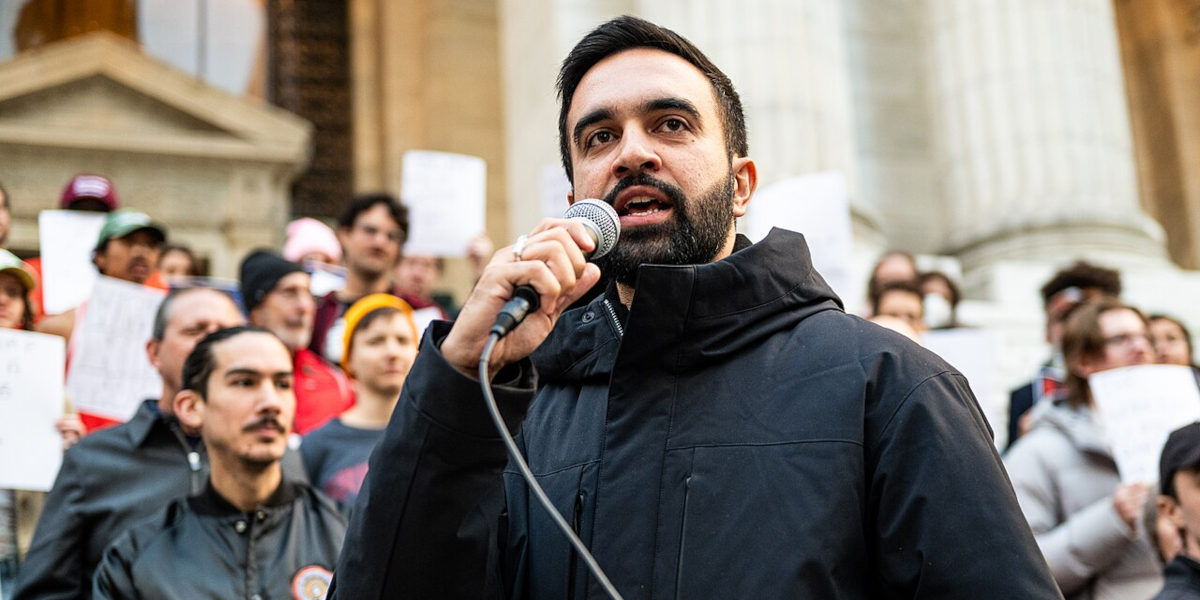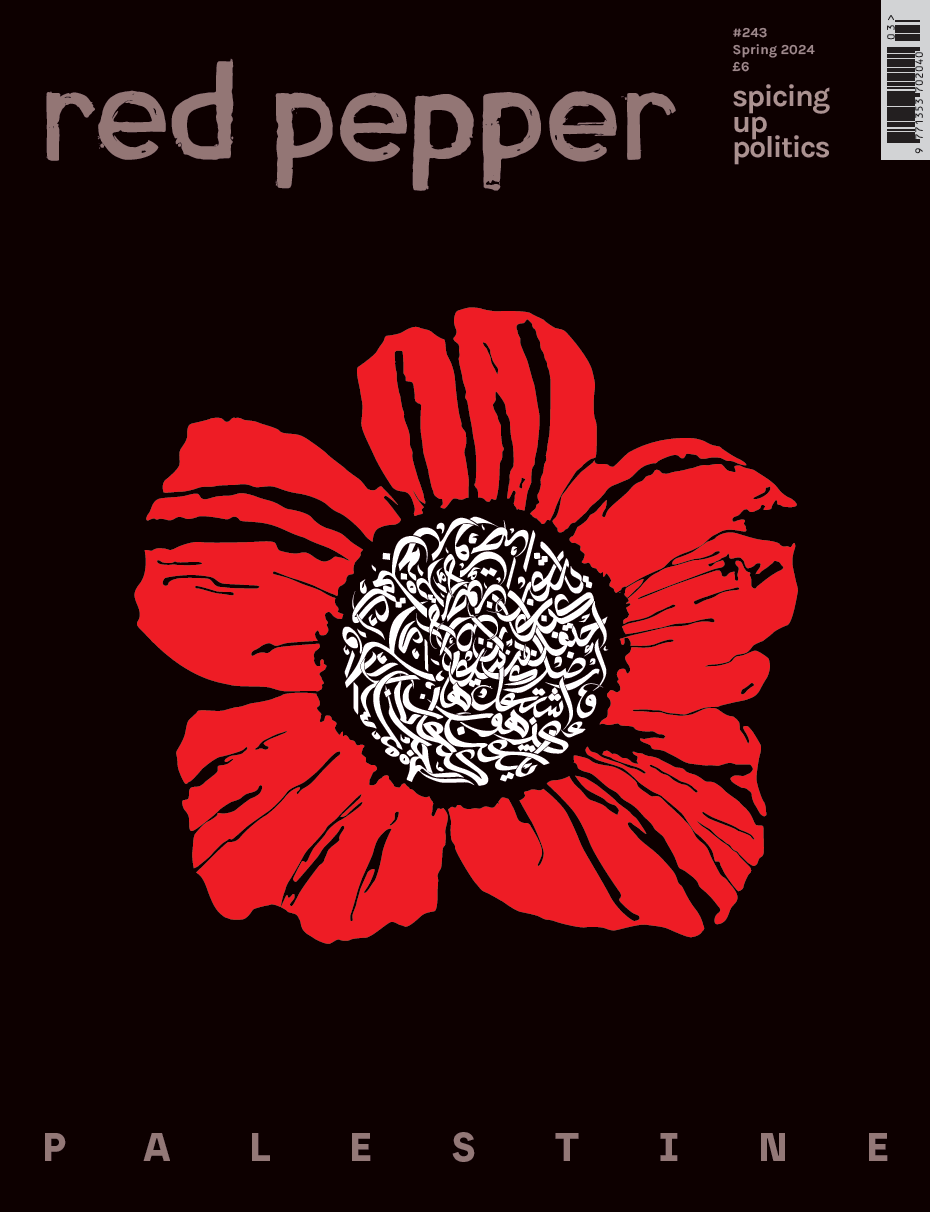In New York City, it’s clear there’s an appetite for a bold departure from business as usual in the Democratic Party. In the primaries of 24 June 2025, Democrats selected Zohran Kwame Mamdani as their nominee for November’s general mayoral election. Despite a constant barrage from supporters of the Israeli government labelling him as antisemitic, and being deemed by the media too supportive of Palestine to be elected, a strong ground game and social media presence led the 33-year-old to a commanding primary victory.
Mamdani began the campaign as a New York State Assembly member representing Astoria, Queens. Despite a slim legislative record, Mamdani launched a mayoral campaign representing the left flank of the Democratic Party with the help of the New York City chapter of the Democratic Socialists of America. The link between the two is crucial to his victory; NYC-DSA has been building a strong socialist movement in NYC over the past few years, learning from failure and embracing a politics focused on winning local elections. Currently, eleven members of the New York State legislature, representing different areas of NYC, and three members of the New York City Council are DSA members.
On the streets and on the phones
The most impressive feature of Zohran’s campaign was its deliberate and massive ground game that saw over 50,000 volunteers taking to the streets to canvass. These local volunteers engaged with the public about the issues central to his campaign and to the working class of New York: freezing the rent, providing free and fast public buses and free childcare, and implementing a 1% wealth tax on the wealthiest 1% of New Yorkers.
The canvassing operation is a prime example of what a modern mass mobilization can mean in the US, powered by small dollar donors and on the ground volunteers. The breadth of motivation is even more powerful given that Mamdani faced Andrew Cuomo in the primary, a former New York State governor who resigned in disgrace over a sexual harassment scandal but who was still backed by powerful vested interests in the state and in DC.
In addition to the massive canvassing operation, Mamdani’s campaign focused heavily on social media, reaching New Yorkers through their phones. As the campaign posted more on social media, it seemed so did the general public, creating a snowball effect that led to widespread discourse on the campaign through both social and traditional media. The social media campaign is a driving factor behind Mamdani’s success with young people. Voters under 34 represented the largest voting bloc in the election and voted overwhelmingly for Mamdani.
Endorsement and outreach
In the beginning of the campaign, Mamdani snagged a major endorsement from the NYC chapter of the United Auto Workers, which includes many local white-collar workplaces. Jane Fox of the Legal Aid Society Attorneys of UAW Local 3225 said: ‘We want candidates who are going to be very strongly aligned with protecting collective bargaining, protecting the rights of union members, and their free speech. These are the folks who have shown up to support us and to support the UAW, and that is tremendously significant to our members.’
The campaign also received a late boost from major US political figures, including Bernie Sanders and Alexandria Ocasio-Cortez. In her endorsement, AOC said: ‘When I say that this is not just about New York City, but that this is about the United States, I mean that literally because Andrew Cuomo has made clear that if he wins this race, he wants to run for president of the United States.’ Mamdani also received a late cross-endorsement from opponent Brad Lander, another candidate running in the race with similar support. (This is a unique feature of the ranked choice voting in the primary that allows candidates to endorse each other and ask their supporters to rank candidates. Both Mamdani and Lander urged voters not to rank Cuomo).
Zohran’s campaign won through deliberate strategy. Social media and door knocking drove a new coalition of voters to the polls. Following his election victory, Mamdani discussed how his campaign’s outreach focused not on traditional campaign targets but a much wider segment of the New York City population often not targeted by Democrats in city elections.
A diverse new coalition
Despite criticism that Mamdani’s campaign was supported by affluent white workers in downtown Manhattan and north Brooklyn, the nomination was delivered by a diverse coalition of New Yorkers in the outer boroughs. Neighborhoods that voted solidly for Trump in the 2024 election flipped for Zohran. Brighton Beach in South Brooklyn, known as a hub of Russian immigrants, voted for Trump by 44 points but for Mamdani by 16 points.
Mamdani also flipped neighborhoods that went solidly for Eric Adams, the current mayor running in the race as an independent, in the last mayoral primary. Crown Heights had a 45 point swing, and Jamaica, Queens had a 57 point swing to Mamdani over Adam’s vote share.
Furthermore, the campaign’s strategy included a major voter registration effort. In the final 14 days of the campaign, 37,000 new voters registered, many of whom were young people of color voting for the first time. First time voters accounted for almost a quarter of voters. The new registrations, coupled with strong support from the South Asian and Muslim communities, helped to shore up the coalition that granted Mamdani the nomination.
Prospects for the general Mayoral election
As the general election approaches, the question remains whether Mamdani can keep together the coalition that delivered him the nomination and maintain the momentum of his primary campaign. Mamdani faces a slew of candidates in the general election including the current mayor Eric Adams, Republican Curtis Silwa, and again Andrew Cuomo, who has declared that he will remain in the race as an independent.
Already, major figures in the Democratic Party have refused to endorse Mamdani, including the governor and both US Senators from New York. The junior senator, Kirstin Gillibrand, even claimed that Mamdani had made ‘references to global jihad,’ a remark she was later forced to apologize for publically.
Mamdani has proven there is an appetite in NYC for socialist ideals, and ran a campaign focused solely on the issues facing working people in the city. The movement that swept him to victory must be maintained if he is to succeed as mayor and challenge the power structure in New York City to deliver for working people.










